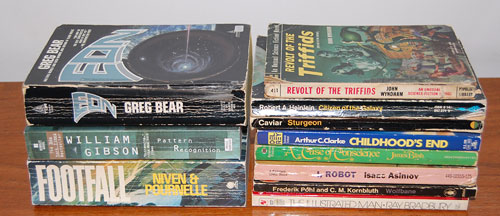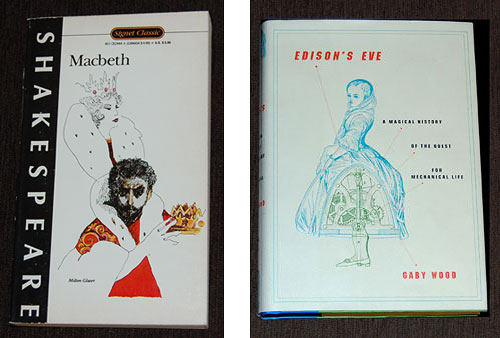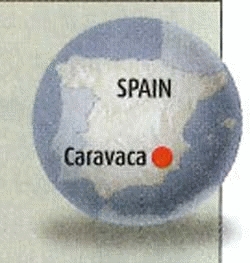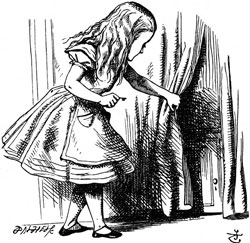 Say “Alice in wonderland”, and the image that comes to mind (well, at least in the generations that used to read books) is a little girl in a tidy Victorian knee-length puffed sleeve dress with a pinafore, and long blond hair – the girl in the image at right. This comes from the famous illustrations by John Tenniel, a successful professional illustrator that Carroll retained to illustrate the book. The illustrations by Tenniel became iconic, although they bear no resemblance to Alice Liddell, the lead character’s namesake, who was not blonde in the least.
Say “Alice in wonderland”, and the image that comes to mind (well, at least in the generations that used to read books) is a little girl in a tidy Victorian knee-length puffed sleeve dress with a pinafore, and long blond hair – the girl in the image at right. This comes from the famous illustrations by John Tenniel, a successful professional illustrator that Carroll retained to illustrate the book. The illustrations by Tenniel became iconic, although they bear no resemblance to Alice Liddell, the lead character’s namesake, who was not blonde in the least.
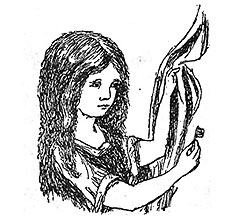 And then there is a different Alice altogether, the one envisioned by Carroll himself and found in the illustrations he drew by his own hand for the handwritten draft of the book, “Alice’s adventures underground”. I have a book showing these, and the comparison is interesting. Here, for example, is the same picture of Alice holding the golden key to the tiny door behind the curtain at the bottom of the rabbit hole. No blond hair, no fancy clothing.
And then there is a different Alice altogether, the one envisioned by Carroll himself and found in the illustrations he drew by his own hand for the handwritten draft of the book, “Alice’s adventures underground”. I have a book showing these, and the comparison is interesting. Here, for example, is the same picture of Alice holding the golden key to the tiny door behind the curtain at the bottom of the rabbit hole. No blond hair, no fancy clothing.
So here, for your enjoyment, are some comparisons of the Carroll and Tenniel realizations of some scenes in the book:
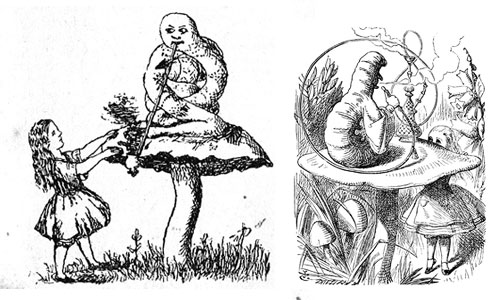
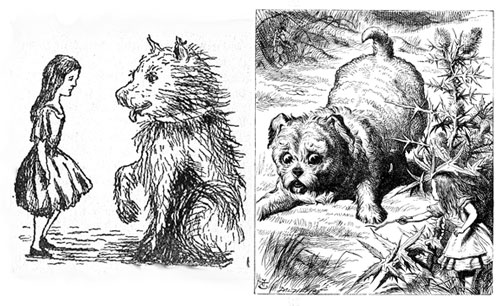
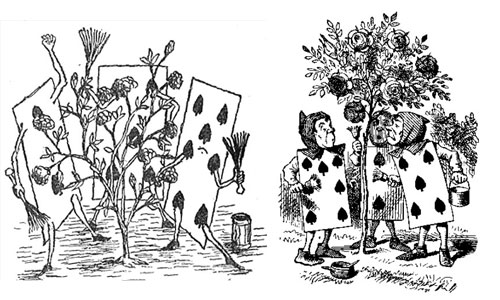
As we can see, Tenniel was definitely a more capable illustrator; but he followed Carroll’s lead — indeed, Carroll supervised him closely, since he was paying him a hefty fee.
And although most of the Tenniel drawings are based on Carroll’s, there are some of the latter that did not make it into the printed book. Like these two:


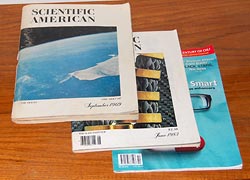 The issues shown are from September 1969, June 1983, and October 2009. The difference in thickness is striking indeed: 10.6, 5.3 and 2.2 millimeters respectively. As far as pages go, the counts are 288, 156 and 72. What happened??
The issues shown are from September 1969, June 1983, and October 2009. The difference in thickness is striking indeed: 10.6, 5.3 and 2.2 millimeters respectively. As far as pages go, the counts are 288, 156 and 72. What happened?? Is this good or bad? Admittedly there’s some attractiveness in ad-free reading; on the other hand, clearly it’s bad for the publisher, and may explain the paucity of real content. It may also explain the cost per page: issue price rose from $1 to $2.50 to $5.99, which is almost constant in normalized present day dollars; but we get less and less pages and articles for this investment.
Is this good or bad? Admittedly there’s some attractiveness in ad-free reading; on the other hand, clearly it’s bad for the publisher, and may explain the paucity of real content. It may also explain the cost per page: issue price rose from $1 to $2.50 to $5.99, which is almost constant in normalized present day dollars; but we get less and less pages and articles for this investment.